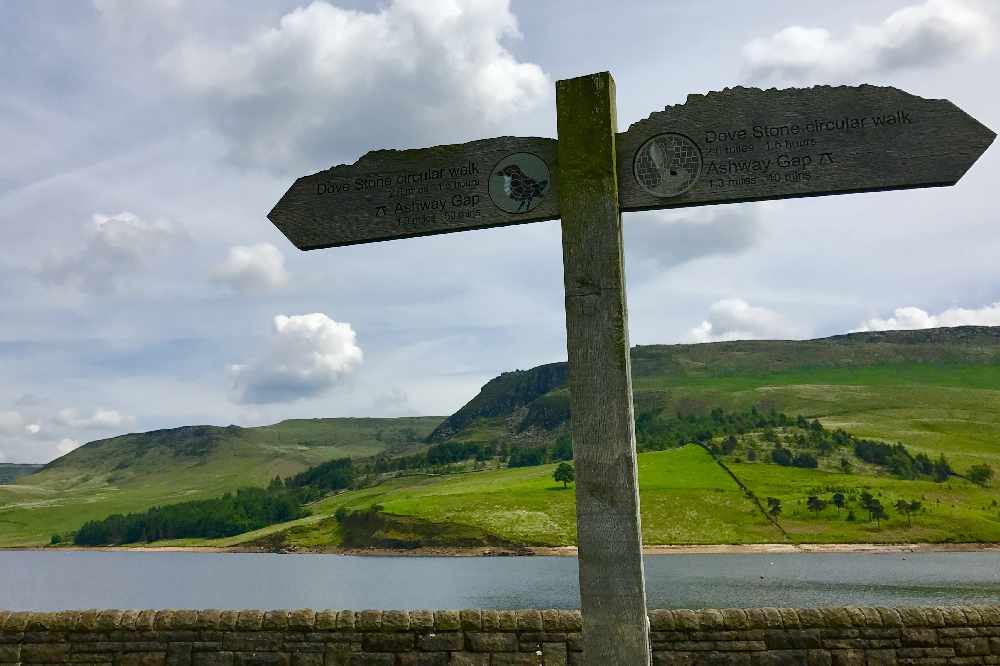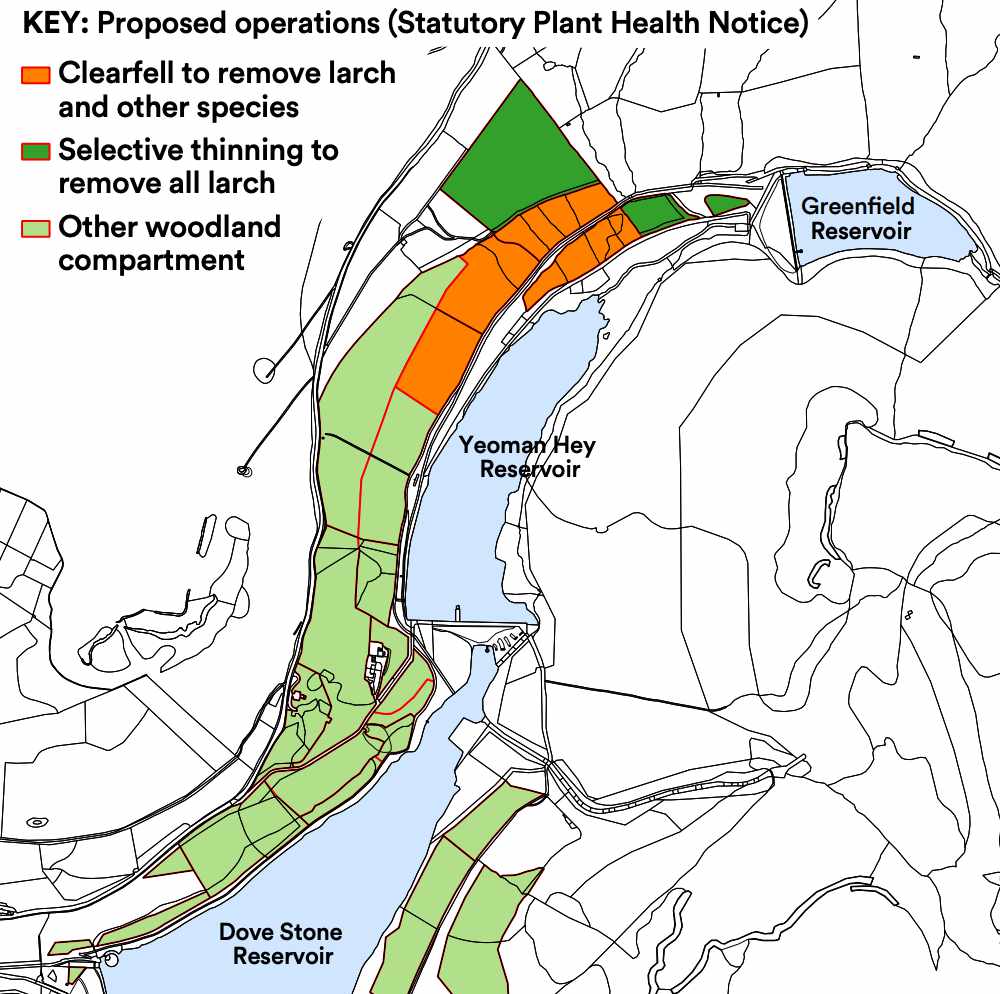
A tree disease that has been spreading through large tracts of the UK has been found at Dove Stone, United Utilities has confirmed.
Phytophthera Ramorum causes extensive damage and death to a range of trees and other plants with larch trees being particularly susceptible, and large numbers have been affected throughout the country.
The only way to minimise the spread of the disease is to fell the infected trees and any in their vicinity.
The Forestry Commission has served a statutory plant health notice instructing United Utilities to remove all infected larch trees, as well as other species then left exposed to wind by their removal, in approximately seven hectares of non-native woodland at Dove Stone. This includes some areas of woodland near the reservoir path and in Bill O’Jacks Plantation.
Felling of the infected and exposed trees at Dove Stone is due to begin during this summer.
United Utilities say that for safety reasons it will mean some short-term disruption to visitors because some permissive paths will need to be temporarily diverted.
They add that, wherever possible, the timber will be sent to saw mills and other users, through licenced movement of the infected material, and used for construction, fencing products, pallet wood and biomass.

A map showing the affected areas for tree felling at Dove Stone
Ross Evans, Estates and Land Manager at United Utilities, said: “We’re doing everything we can to help stop the spread of this damaging disease. We’re working closely with the Forestry Commission plant health and regulatory teams and following forestry industry best practice to use the right biosecurity, wildlife protection and water protection measures.
“It’s very sad that this disease has appeared again, but now more widespread, in the South Pennines. As a responsible landowner we must now fell the trees in the affected area. Once the felling work has been completed, we will replant with predominantly native broadleaved woodland species like oak, birch and rowan. This will help the area recover, whilst providing biodiversity, water quality and landscape enhancement measures for future generations to enjoy.”
Although the disease is harmless to people and animals, signs will be installed around the reservoir asking visitors to take simple precautions and help stop it spreading. These are:
- Avoid the area if possible to prevent the spread of disease to other woodland areas
- Knock off any soil and mud from footwear and bike wheels to prevent it leaving the area. It’s also a good idea to give them a thorough wash when you get home before visiting any other woodlands and parks too
- Keep to marked paths and observe the signage
- Keep dogs on a lead
More information about the emergency work can be found at unitedutilities.com/larch-disease


 Spectacular event steams back into Saddleworth
Spectacular event steams back into Saddleworth
 'Needs improvement' school headed in 'right direction' says headteacher
'Needs improvement' school headed in 'right direction' says headteacher
 132 new "future-proof" homes will be built in Derker, Oldham
132 new "future-proof" homes will be built in Derker, Oldham
 Oldham: Taxi rank to close as ‘major works’ take place in town centre
Oldham: Taxi rank to close as ‘major works’ take place in town centre


